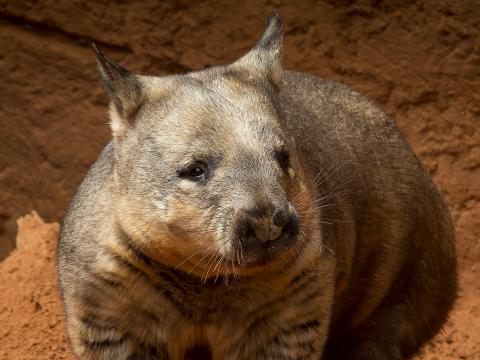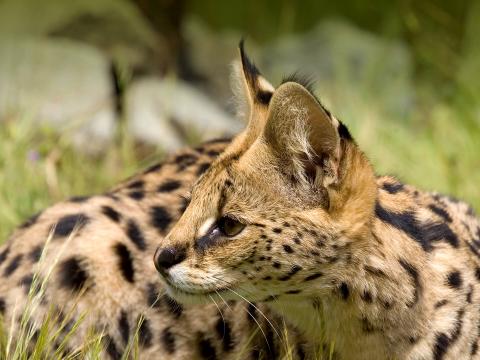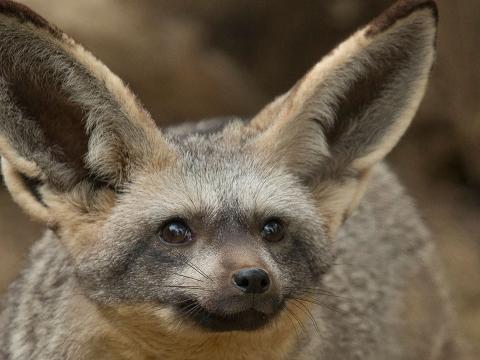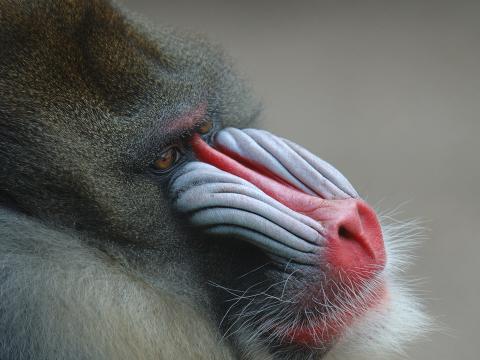Agouti
- Class: Mammalia (Mammals)
- Order: Rodentia
- Family: Dasyprocidae
- Genus: Dasyprocta
- Species: 11
ABOUT
Rodents that rock. The agouti (ah GOO tee) is a rodent from Central and South America rainforests that looks a bit like a really large guinea pig. Its coarse hair is covered with an oily (and stinky!) substance that acts like a raincoat. The hair is longest on its rump. The agouti has five toes on its front feet and three on the hind feet. It walks on its toes, not flat-footed like many rodents, giving the agouti a dainty look.
Although it is hard to see it, the agouti does have a tail: it is very small, looking like a dark jelly bean stuck on the rump!
Are you nuts? Just like other rodents, agoutis have teeth designed to gnaw on very hard items, with one pair of sharp incisors in the front of the mouth. These are the teeth they use to chew through tough items like nutshells. The layers of enamel on their teeth are twisted in a way that makes them much stronger. Brazil nuts may be hard for us to crack, but they pose no problem for agoutis! This sturdy rodent is the only animal that can crack open the hard outer shell of a Brazil nut.The sharp incisors keep growing throughout their lifetime, ensuring that they always have nut-cracking tools at the ready. Agoutis use their molars to grind food items.
HABITAT AND DIET
What'cha doin'? Much of this rodent's time is spent searching for food or taking a dip in a pool of water. At rest, the agouti stays in a burrow or hollow tree trunk, safe from predators such as coatimundis, jaguars, and ocelots. Sharp hearing and a keen sense of smell help the agouti prepare when a predator is near: it may freeze, make an alarm call, stamp its feet, or raise the long hairs on its rump to scare the enemy away.
To make an escape, an agouti can run pretty quickly. More amazingly, this rodent can jump up to 6 feet (1.8 meters) straight up in the air from a standing position, spin around, land, and dash off in the opposite direction!
Feasting, forgetting, and farming. Fallen fruit is the agouti's favorite food, with nuts a close second. Its sensitive ears can even hear when the fruit hits the ground! The agouti often eats upright, holding its food with the front feet, just like a squirrel.
When there's lots of food, an agouti buries the extra portions around its territory for future meals. That keen nose helps the agouti locate the food again in times of need. If the agouti buries a nut and never returns to eat it, the nut just might grow into a tree, making agoutis good rainforest gardeners!
FAMILY LIFE
Hi Honey, I'm home. An agouti pair-bonds with another agouti for life. After a three-month gestation period, one to four precocial babies are born in a nest of leaves, roots, and hair, looking just like miniatures of Mom and Dad. They can run just an hour after birth and usually stay with their parents until the next litter is born.
It can be hard to see in a dark rainforest habitat, so the agouti marks its territory with urine as a smelly way to tell other agoutis to keep out.
Agoutis are good swimmers but cannot dive.
CONSERVATION
Agoutis play a vital role in the survival of Brazil nut trees and the people who depend on the trees in remote areas of South America. Brazil nuts bring in millions of dollars each year. Remember, agoutis are the only animals that can open the thick husk to allow the seeds to sprout. If the agouti population declines, it could have an effect on a rainforest's health. The Coiban agouti Dasyprocta coibae and Ruatan Island agouti Dasyprocta ruatanica are endangered, because they are being hunted for food and are losing their habitat.










